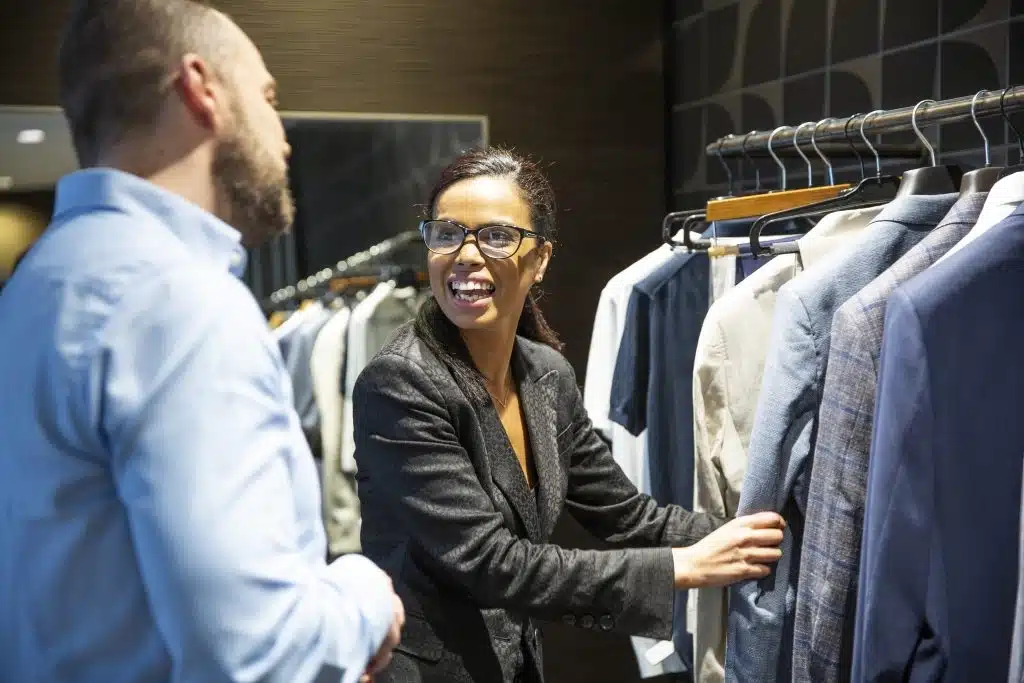Clienteling in Digital Retail: How Human Connection Drives Loyalty and Sales
14/09/2020 | by Chris Wood

Clienteling in Digital Retail: Why Human Connection Still Matters
Clienteling in digital retail is no longer optional — it’s essential. As brands like M&S gain millions of new online customers and shift their focus to ecommerce, the need for human connection in digital channels has never been greater. While online sales soar, in-store sales continue to decline, leaving many retailers struggling to adapt.
They’re not alone. Many retailers are experiencing the same shift: store sales down, online sales up. It’s a trend that’s been growing for over a decade, but the pandemic accelerated its pace. And many are still playing catch-up.
This transformation is happening alongside a major shift in consumer values. Materialism is declining, while minimalism, sustainability, and ethical trading are now key decision drivers for today’s conscious customers. But one thing hasn’t changed: emotion still drives buying behaviour.
From the panic-buying of toilet roll to the joy of unboxing a luxury handbag, emotions sit at the heart of why we buy. Retailers must now find ways to replicate these emotional moments in a digital-first world.
The Store Associate: A Retail Superpower
Even as retail becomes more digital, the secret to creating emotional connections often still lies in the physical store — or more specifically, the store associate.
For two centuries, store associates have been central to building customer loyalty, blending product knowledge, brand values, and personal service. In today’s landscape, retailers must equip these teams with the tools to deliver that same magic — but beyond the store walls.
At Proximity Insight, we’ve been helping brands do this since 2014. Whether you’re selling fashion, beauty, jewellery, furniture, or tech, there’s one truth that remains:
When a real person connects with a customer in a personalised, meaningful way — conversion and loyalty follow.
Here are 4 key lessons we’ve learned from helping brands implement clienteling across all channels:
1. Personal is Powerful
When customers receive a personal outreach message from a store associate (not just a marketing email), the results speak for themselves:
-
50–70% open rates
-
17–20% response rates
-
Higher conversion and average order values
It’s not about messaging everyone. It’s about using data to target key segments — like lapsed customers or post-purchase follow-ups — and reaching them in a way that feels genuine.
2. Customers Crave Human Interaction
We’re social beings. Many high-value customers still prefer in-store experiences and personal contact with associates they trust.
These relationships create belonging and loyalty. Giving associates the ability to nurture these relationships digitally will be critical to brand strategies in 2025 and beyond.
3. Technology Unlocks Associate Potential
One of our retail clients exceeded their sales targets while their store was closed — simply by enabling associates to connect with customers remotely.
This kind of success proves that with the right tools, store associates can become true customer keepers, able to sell and support across all channels. But this requires leadership, mindset shifts, and collaboration across teams — from Retail Ops to Marketing to L&D.
4. The Rise of the Freelance Seller
Another emerging trend: brands tapping into the gig economy to reach customers in new ways. With retail, travel, and hospitality sectors heavily impacted by job losses, there’s a skilled talent pool available.
Freelance stylists, makeup artists, interior designers, and coaches may be a new channel for delivering personal, localised, and expert-led experiences.
The Way Forward
As we approach winter and prepare for further disruptions, retailers must think carefully about how they’ll survive — and thrive — in Q1 and beyond.
The answer? Recognising the value of the people they already employ. With the right technology, your store associates can become your most powerful tool for clienteling in digital retail — building human connection, boosting sales, and driving brand loyalty.

